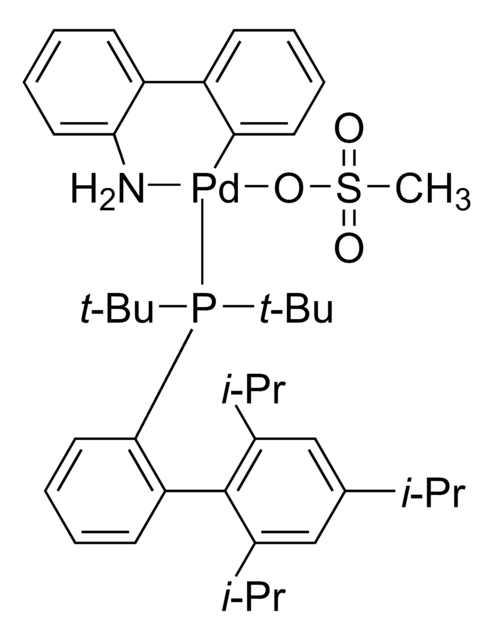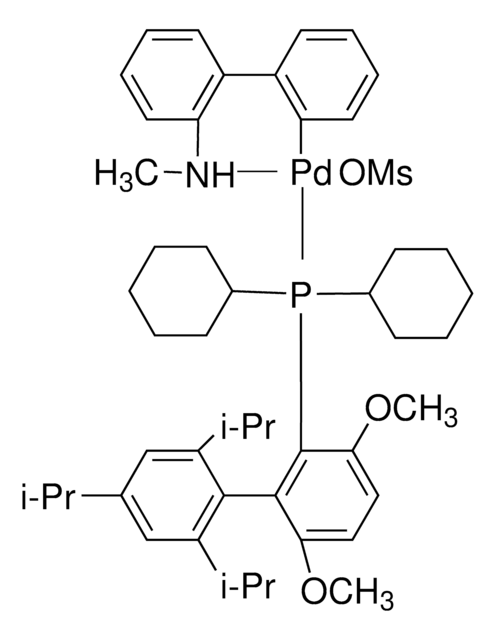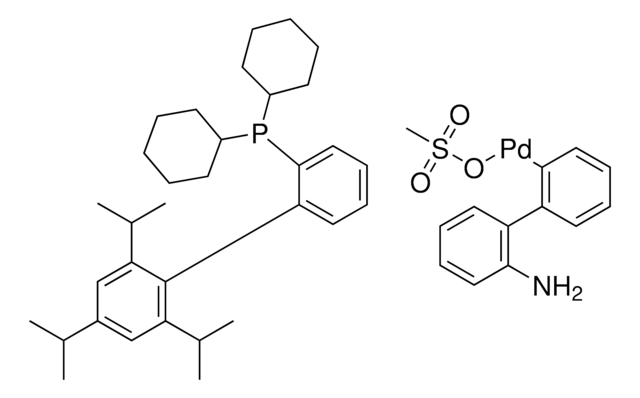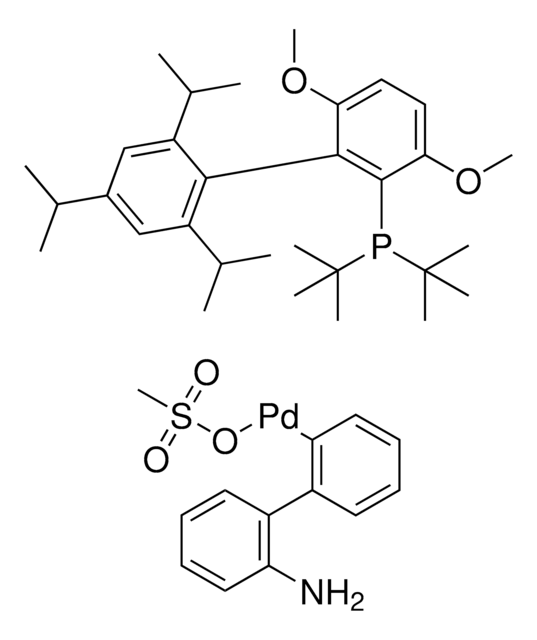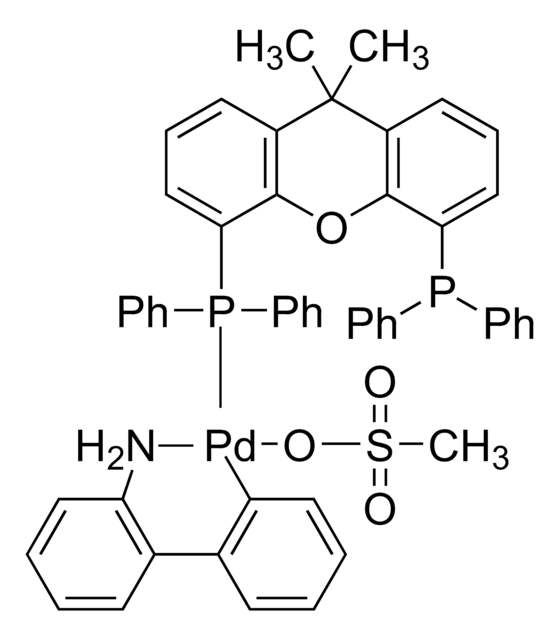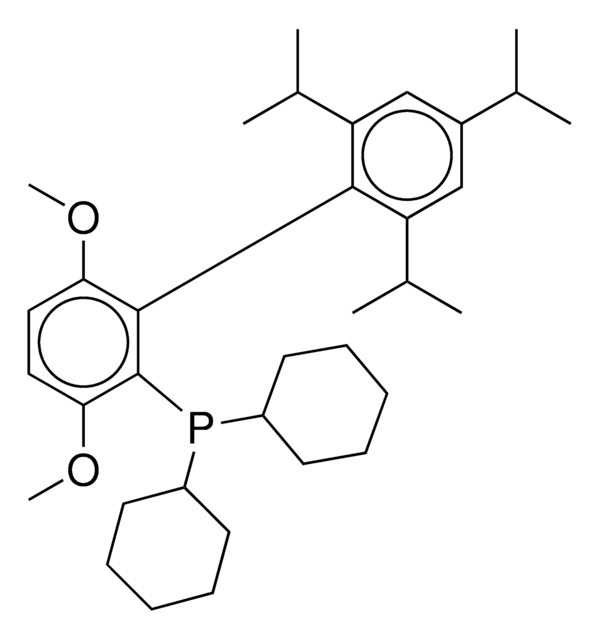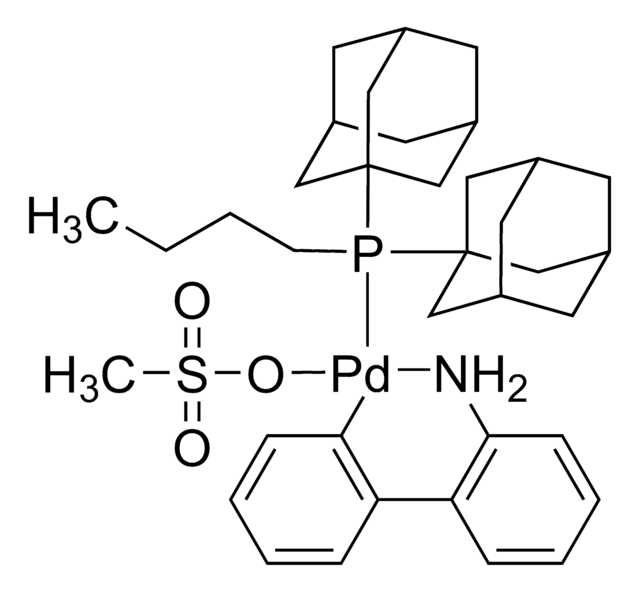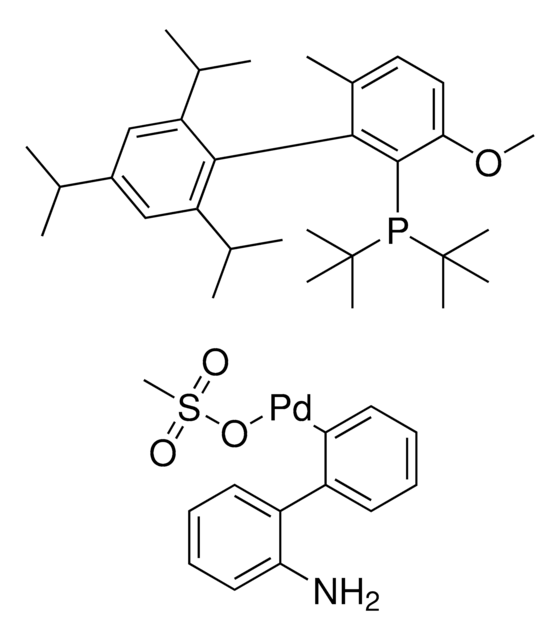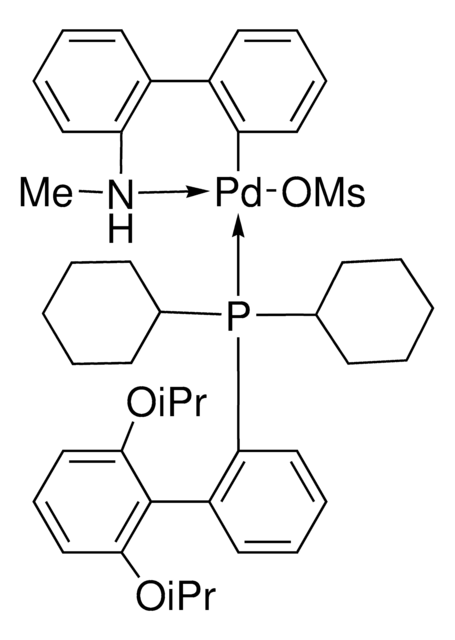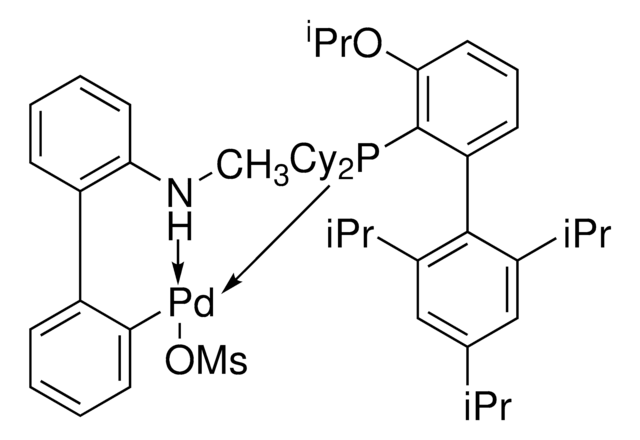761605
BrettPhos Pd G3
98%
Synonyme(s) :
[(2-Di-cyclohexylphosphino-3,6-dimethoxy-2′,4′,6′- triisopropyl-1,1′-biphenyl)-2-(2′-amino-1,1′ -biphenyl)]palladium(II) methanesulfonate methanesulfonate
About This Item
Produits recommandés
Niveau de qualité
Essai
98%
Forme
solid
Caractéristiques
generation 3
Capacité de réaction
reaction type: Buchwald-Hartwig Cross Coupling Reaction
Pertinence de la réaction
reagent type: catalyst
core: palladium
reaction type: Cross Couplings
Pf
150-193 °C (decomposition)
Groupe fonctionnel
amine
Chaîne SMILES
CS(=O)(O[Pd]c1c(c2c(N)cccc2)cccc1)=O.COc3c(P(C4CCCCC4)C5CCCCC5)c(c6c(C(C)C)cc(C(C)C)cc6C(C)C)c(OC)cc3
InChI
1S/C35H53O2P.C12H10N.CH4O3S.Pd/c1-23(2)26-21-29(24(3)4)33(30(22-26)25(5)6)34-31(36-7)19-20-32(37-8)35(34)38(27-15-11-9-12-16-27)28-17-13-10-14-18-28;13-12-9-5-4-8-11(12)10-6-2-1-3-7-10;1-5(2,3)4;/h19-25,27-28H,9-18H2,1-8H3;1-6,8-9H,13H2;1H3,(H,2,3,4);/q;;;+1/p-1
Clé InChI
PQYBJDCHLVJYSD-UHFFFAOYSA-M
Description générale
Application
It may be used in the synthesis of following compounds:
- [Pd(cinnamyl)(BrettPhos)]OTf by reacting with [(cinnamyl)PdCl]2 and AgOTf.
- [Pd(crotyl)(BrettPhos)]OTf by reacting with [(crotyl)PdCl]2 and AgOTf.
- [Pd(allyl)(BrettPhos)]OTf by reacting with [(allyl)PdCl]2 and AgOTf.
- Pd(allyl)(BrettPhos)Clby reacting with [(allyl)PdCl]2.
Produit(s) apparenté(s)
Code de la classe de stockage
11 - Combustible Solids
Classe de danger pour l'eau (WGK)
WGK 3
Point d'éclair (°F)
Not applicable
Point d'éclair (°C)
Not applicable
Faites votre choix parmi les versions les plus récentes :
Déjà en possession de ce produit ?
Retrouvez la documentation relative aux produits que vous avez récemment achetés dans la Bibliothèque de documents.
Les clients ont également consulté
Articles
All of the preformed catalysts used in the kit are air and moisture stable complexes in their commercially available form. Once activated by base under the reaction conditions they become sensitive to air. To best enable scale-up success, the use of standard Schlenk technique is recommended.
All of the preformed catalysts used in the kit are air and moisture stable complexes in their commercially available form. Once activated by base under the reaction conditions they become sensitive to air. To best enable scale-up success, the use of standard Schlenk technique is recommended.
All contents in the foil bag are weighed, plated, packed, and sealed in a glove box under nitrogen.
G3 and G4 Buchwald palladium precatalysts are the newest air, moisture, and thermally stable crossing-coupling complexes used in bond formation for their versatility and high reactivity.
Contenu apparenté
The Buchwald group has developed a series of highly active and versatile palladium precatalysts and biarylphosphine ligands used in cross-coupling reactions for the formation of C-C, C–N, C–O, C–F, C–CF3, and C–S bonds. The ligands are electron-rich, and highly tunable to provide catalyst systems with a diverse scope, high stability and reactivity. Furthermore, the new series of precatalysts are air-, moisture and thermally-stable and display good solubility in common organic solvents. The use of precatalysts ensures the efficient generation of the active catalytic species and allows one to accurately adjust the ligand:palladium ratio. The ligands, precatalysts and methodology developed in the Buchwald group are user friendly and have rendered previously difficult cross couplings reactions, much easier to achieve.
Global Trade Item Number
| Référence | GTIN |
|---|---|
| 761605-1G | 4061832918440 |
| 761605-250MG | 4061832970653 |
| 761605-5G | 4061832918457 |
| 761605-10G | 4061832970646 |
Notre équipe de scientifiques dispose d'une expérience dans tous les secteurs de la recherche, notamment en sciences de la vie, science des matériaux, synthèse chimique, chromatographie, analyse et dans de nombreux autres domaines..
Contacter notre Service technique